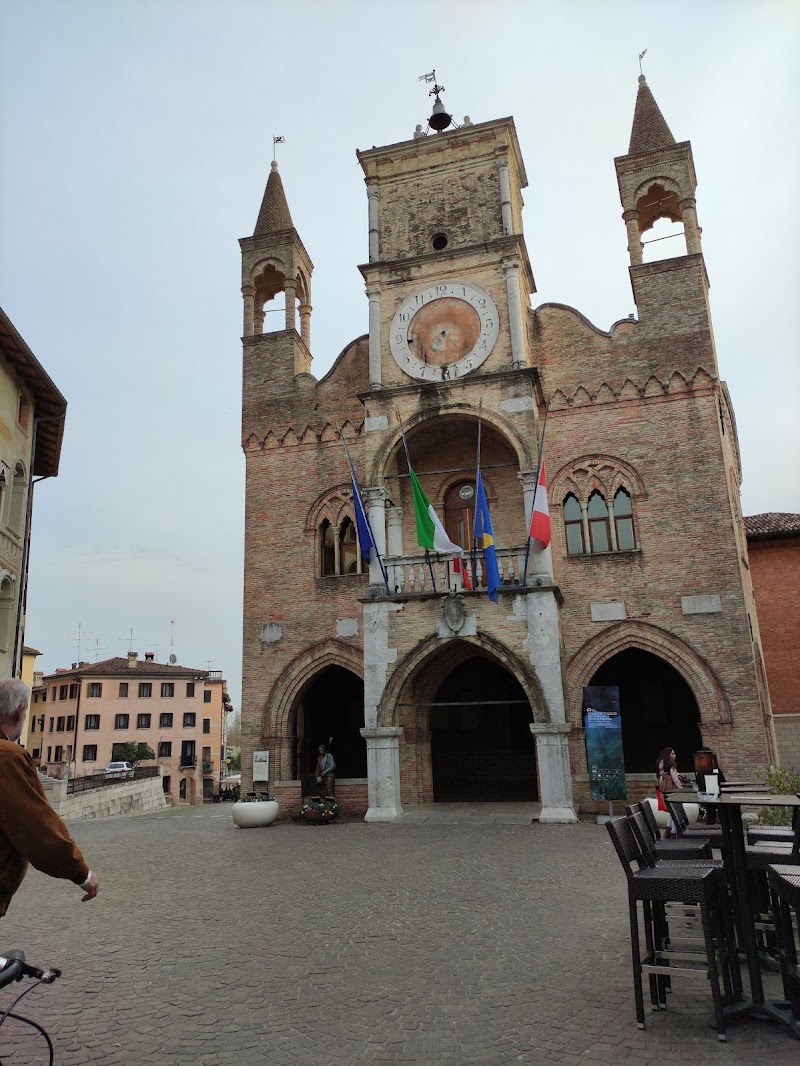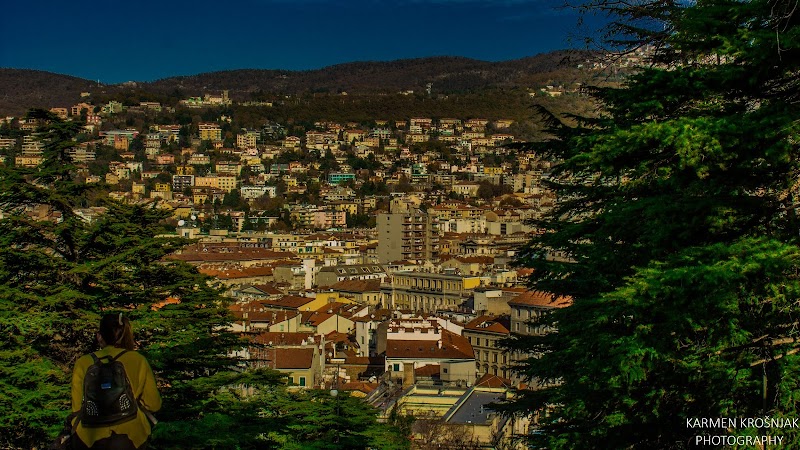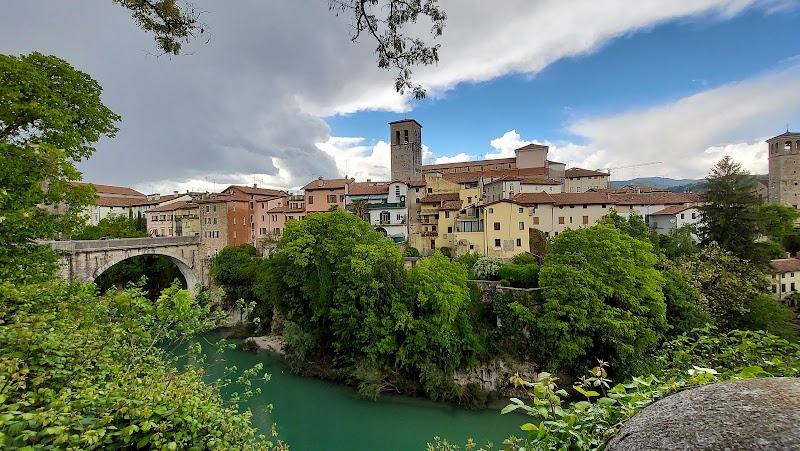Prepare to be enchanted by the region where less than 1% of Italy's total population resides, yet is the heart of diverse cultures, languages, and landscapes. Welcome to Friuli-Venezia Giulia, a hidden gem where the charm of the majestic Dolomites, the captivating coastal towns of Trieste and Grado, and the vineyard-adorned hills of Collio mesmerize every traveler. This under-the-radar destination is a sensory fusion of Italian, Slovenian, and Austrian influences, promising an intoxicating mix of experiences.
If planning your adventure in this magical region appears daunting due to its myriad of attractions, do not fret. A detailed tourist map of Italy becomes your essential companion, shedding light on the labyrinth of unforgettable experiences. It doesn't just serve as a planning tool, but a key to unlock the numerous secrets of Friuli-Venezia Giulia, leading your way through this fascinating corner of Italy.
" Booking.comUnraveling the Hidden Treasures of Friuli-Venezia Giulia
If you are a traveler longing to tread Italy's lesser-known paths, the region of Friuli-Venezia Giulia offers a blend of landscapes, cultures, and experiences that strikingly contrast the country's more popular tourist trails. This region, nestled between the Adriatic Sea, the Alps, Slovenia, and Austria, captivates with its rich blend of natural beauty, intriguing history, and vibrant cultural mix. You can explore the Veneto region which is nearby and offers a rich Italian culture and history as well.
An Exploration into Friuli-Venezia Giulia's Historic Towns
The diverse heritage of Friuli-Venezia Giulia is prominently displayed in its charming towns, each radiating a distinctive allure. From the medieval aura of Cividale del Friuli to the Venetian influences in Udine, these towns provide a glimpse into the region's intricate past. While discovering these towns, don't forget to keep your tourist map handy to plan your route. You might also consider venturing beyond and exploring the Apulia region in southern Italy, known for its beautiful beaches and history.
Cividale del Friuli: A Journey to the Past
Boasting a UNESCO World Heritage status, Cividale del Friuli calls you with its ancient Lombard roots and a plethora of well-preserved medieval landmarks. Crossing the Devil's Bridge is an immersive experience, offering panoramic vistas of the Natisone River and the town's historic center.
Udine: The Venetian Soul
Udine, a city of elegant squares and Venetian-style edifices, is a testament to Friuli-Venezia Giulia's Venetian past. The city's Piazza della Libertà, reminiscent of Venice's St Mark's Square, is a vibrant center adorned with significant landmarks like the Loggia del Lionello and the Clock Tower. If you're interested in Venetian culture, you might want to explore the Liguria region, another area of Italy shaped by Venetian influences.
Discovering Friuli-Venezia Giulia's Natural Wonders
From the Alpine landscapes to the Adriatic coastline, Friuli-Venezia Giulia's natural scenery is as diverse as its cultural heritage. Whether it's the calm allure of the Carnia and Julian Alps or the wild charm of the Karst Plateau, nature lovers will be spellbound by the region's unspoilt landscapes.
Carnia and Julian Alps: Alpine Serenity
Featuring lush valleys, clear lakes, and quaint mountain villages, the Carnia and Julian Alps provide a serene retreat away from the bustling tourist crowds. Whether you're hiking in the summer or skiing in the winter, the region's natural splendor is bound to captivate you.
Karst Plateau: The Wild Beauty
The Karst Plateau, stretching across the Italian-Slovenian border, is a unique natural area known for its wind-eroded limestone features. A haven for a rich biodiversity and numerous caves, this rugged terrain offers an adventurous journey for nature enthusiasts.
Immersing in Friuli-Venezia Giulia's Cultural Tapestry
With its unique blend of Italian, Slovenian, and Austrian influences, Friuli-Venezia Giulia's culture is a fascinating mix that mirrors in its language, traditions, and cuisine. A visit to the region is incomplete without participating in a cultural event or tasting the local gastronomy.

Practical Information for Travelling in Friuli-Venezia Giulia
Transportation and Mobility
Roaming around Friuli-Venezia Giulia is relatively easy with an array of transportation options at your disposal. The region is well-connected by train, with regular services from Trieste to Udine, Gorizia, and Pordenone. Buses are also a viable option, especially for reaching smaller towns and rural areas. If you wish to explore the region at your own leisure, consider hiring a car, particularly for scenic routes in the Carnia and Julian Alps or the vineyard-clad hills of Collio. Rental services are available at airports and major towns.
Schedules and Prices
Trains in Friuli-Venezia Giulia operate regularly from the early morning until late in the evening. Prices fluctuate depending on the distance and type of train, but a ticket from Trieste to Udine typically costs around €10-15. Bus fares are similar, and all public transport operates on a ticket system which can be purchased at stations, online, or at local tobacconists. Car rental prices start from around €30 per day, but can increase during the peak summer season.
Safety Tips
While Friuli-Venezia Giulia is generally a safe region, it's always advisable to exercise common sense and stay vigilant. Keep your belongings close in crowded areas and be aware of your surroundings. In the mountainous areas, be prepared for rapidly changing weather and always have a map or GPS. During winter, check the weather conditions and road closures before embarking on a journey to the mountains.
Practical Recommendations
The best time to visit Friuli-Venezia Giulia hinges on your preferences. For beach aficionados, the ideal time is during the summer months of June, July, and August when coastal towns are bustling with activity. The spring and autumn are perfect for hiking in the mountains and visiting the vineyards. For skiing and winter sports, the Dolomites are best visited from December to March. It's crucial to always check the opening times of museums, wineries, and restaurants as these can vary seasonally.

Frequently Asked Questions about Friuli-Venezia Giulia
1. How can I explore the unique culinary scene of Friuli-Venezia Giulia?
The culinary scene of Friuli-Venezia Giulia is a fusion of Italian, Slovenian, and Austrian influences, each adding a distinct flavor to the region's cuisine. Embark on a gastronomic journey by visiting local trattorias where you can sample traditional dishes like Frico (cheese and potatoes) and Gubana (sweet pastry). Pair your meals with the exceptional white wines the region is famed for.
2. Are there any unique local festivals in Friuli-Venezia Giulia?
Friuli-Venezia Giulia hosts a variety of unique local festivals throughout the year. One of the most popular is the Carnevale di Venezia, which is celebrated with much fanfare in the region's coastal towns. The region also hosts the Barcolana Regatta, a historic sailing event, in Trieste every October. Always check the official tourism website for the latest information and schedules.
3. What are some hidden architectural gems in Friuli-Venezia Giulia?
Besides the well-known historical towns, Friuli-Venezia Giulia houses several hidden architectural treasures. Make sure to visit the star-shaped Fortress of Palmanova, a UNESCO World Heritage Site. The Sanctuary of Mount Lussari, situated in the Julian Alps, offers breathtaking views and a serene ambiance.
4. Are there any recommended hiking trails in Friuli-Venezia Giulia?
The region of Friuli-Venezia Giulia boasts several mesmerizing hiking trails, particularly in the Dolomites and the Julian Alps. The Alpe Adria trail, which passes through the region, is a popular choice for hiking enthusiasts. It's always recommended to check trail conditions and weather forecasts before embarking on a hike.
5. What is the best time to visit the vineyard-clad hills of Collio?
The most suitable time to visit the vineyard-clad hills of Collio is during the grape harvest season, which typically falls between September and October. During this time, many vineyards offer wine tasting tours, giving you a chance to sample some of the region's finest wines amidst stunning landscapes.
6. Can I take a boat tour around the coastal towns of Trieste and Grado?
Yes, boat tours are a fabulous way to explore the coastal towns of Trieste and Grado. These tours typically offer stunning views of the coast and provide a unique perspective on the region's maritime history. Booking in advance is recommended during the peak tourist season.


